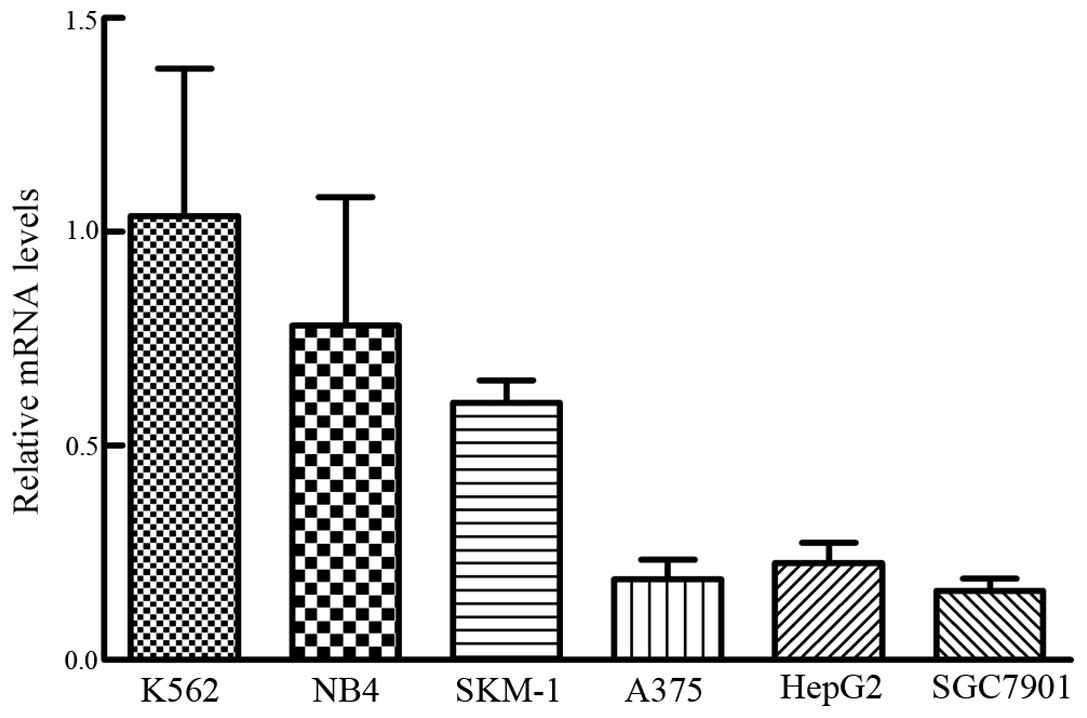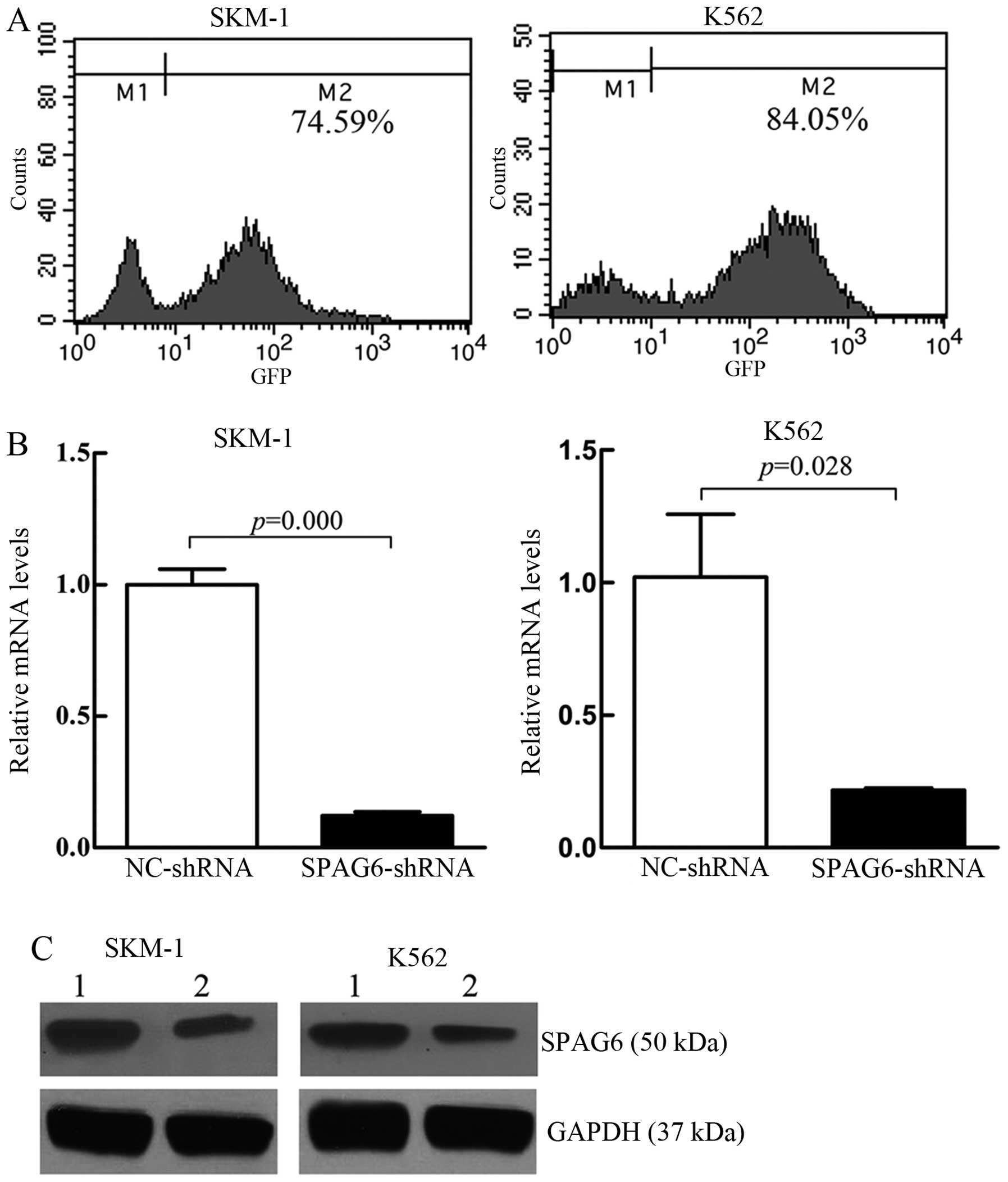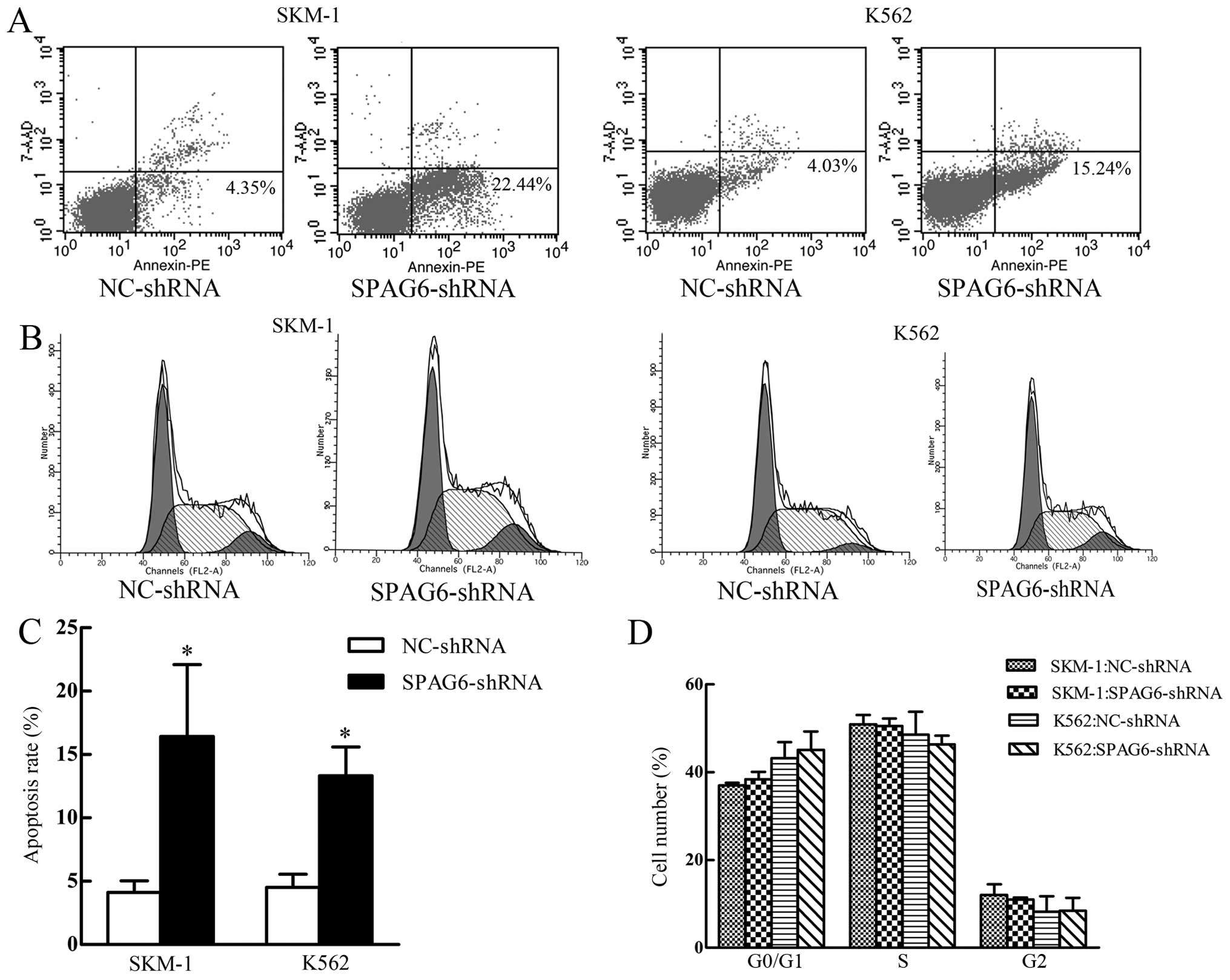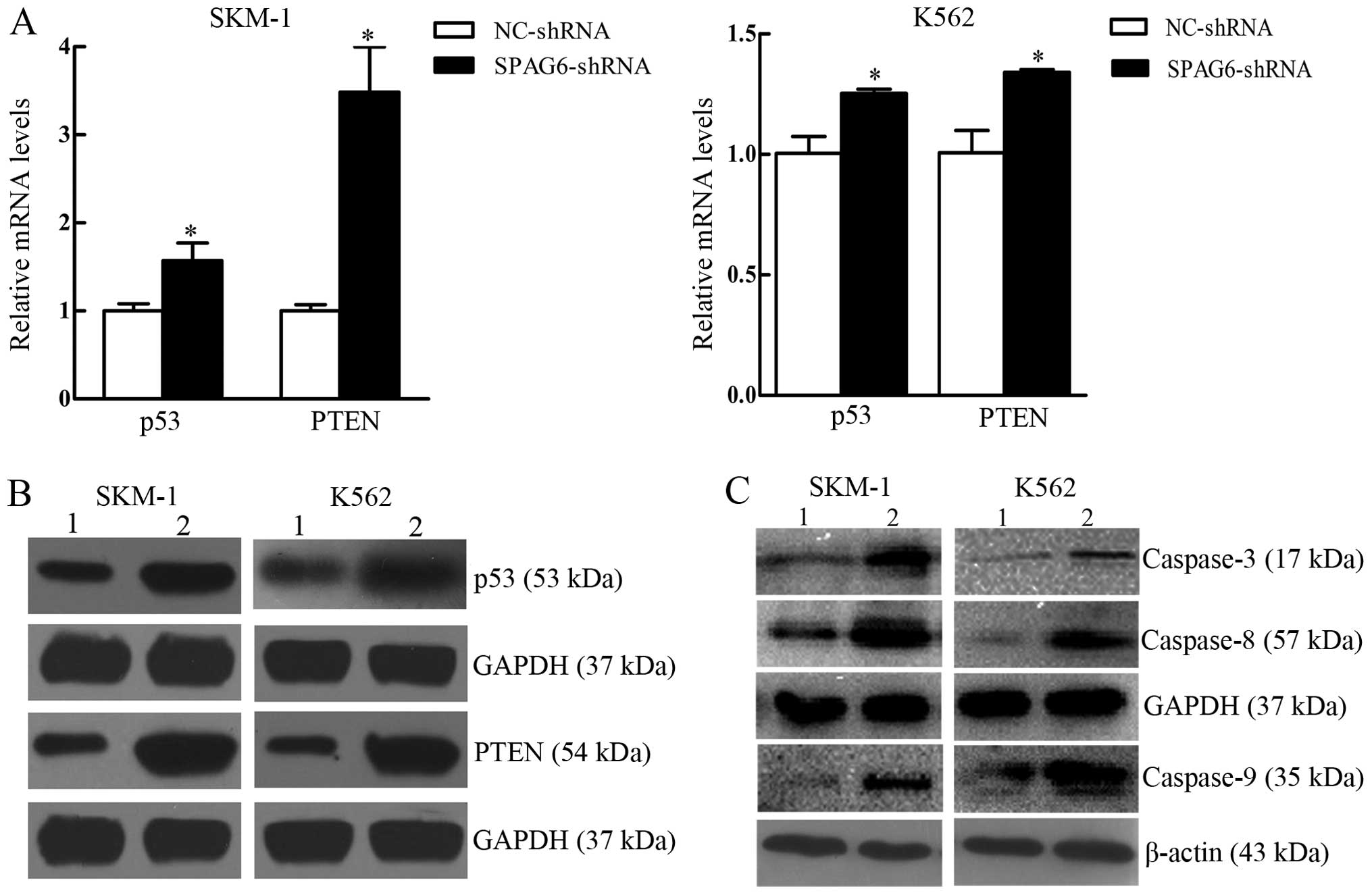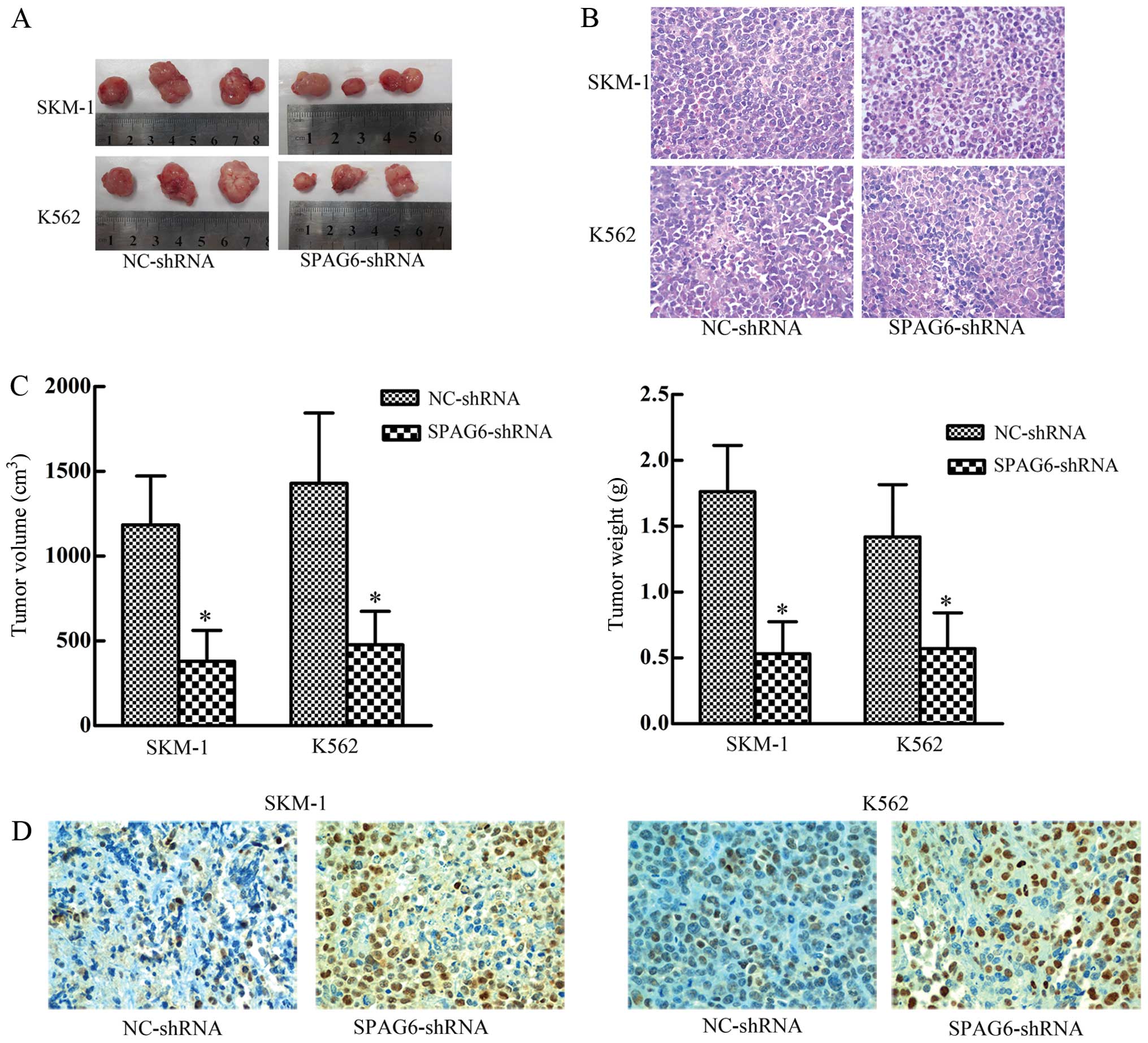|
1
|
Cogle CR, Craig BM, Rollison DE and List
AF: Incidence of the myelodysplastic syndromes using a novel
claims-based algorithm: high number of uncaptured cases by cancer
registries. Blood. 117:7121–7125. 2011. View Article : Google Scholar : PubMed/NCBI
|
|
2
|
Ferrara F and Schiffer CA: Acute myeloid
leukaemia in adults. Lancet. 381:484–495. 2013. View Article : Google Scholar : PubMed/NCBI
|
|
3
|
Schanz J, Tuchler H, Sole F, et al: New
comprehensive cytogenetic scoring system for primary
myelodysplastic syndromes (MDS) and oligoblastic acute myeloid
leukemia after MDS derived from an international database merge. J
Clin Oncol. 30:820–829. 2012. View Article : Google Scholar : PubMed/NCBI
|
|
4
|
Steensma DP and List AF: Genetic testing
in the myelodysplastic syndromes: molecular insights into
hematologic diversity. Mayo Clinic Proceedings. 80:681–698. 2005.
View Article : Google Scholar : PubMed/NCBI
|
|
5
|
Pellagatti A, Cazzola M, Giagounidis AA,
et al: Gene expression profiles of CD34+ cells in
myelodysplastic syndromes: involvement of interferon-stimulated
genes and correlation to FAB subtype and karyotype. Blood.
108:337–345. 2006. View Article : Google Scholar : PubMed/NCBI
|
|
6
|
Zhang Z, Jones BH, Tang W, et al:
Dissecting the axoneme interactome: the mammalian orthologue of
Chlamydomonas PF6 interacts with sperm-associated antigen 6, the
mammalian orthologue of Chlamydomonas PF16. Mol Cell Proteomics.
4:914–923. 2005. View Article : Google Scholar : PubMed/NCBI
|
|
7
|
Zhang Z, Sapiro R, Kapfhamer D, et al: A
sperm-associated WD repeat protein orthologous to Chlamydomonas
PF20 associates with Spag6, the mammalian orthologue of
Chlamydomonas PF16. Mol Cell Biol. 22:7993–8004. 2002. View Article : Google Scholar : PubMed/NCBI
|
|
8
|
Silina K, Zayakin P, Kalnina Z, et al:
Sperm-associated antigens as targets for cancer immunotherapy:
expression pattern and humoral immune response in cancer patients.
J Immunother. 34:28–44. 2011. View Article : Google Scholar
|
|
9
|
Steinbach D, Schramm A, Eggert A, et al:
Identification of a set of seven genes for the monitoring of
minimal residual disease in pediatric acute myeloid leukemia. Clin
Cancer Res. 12:2434–2441. 2006. View Article : Google Scholar : PubMed/NCBI
|
|
10
|
Mulaw MA, Krause A, Deshpande AJ, et al:
CALM/AF10-positive leukemias show upregulation of genes involved in
chromatin assembly and DNA repair processes and of genes adjacent
to the breakpoint at 10p12. Leukemia. 26:1012–1019. 2012.
View Article : Google Scholar
|
|
11
|
Nakagawa T, Matozaki S, Murayama T, et al:
Establishment of a leukaemic cell line from a patient with
acquisition of chromosomal abnormalities during disease progression
in myelodysplastic syndrome. Br J Haematol. 85:469–476. 1993.
View Article : Google Scholar : PubMed/NCBI
|
|
12
|
Andersson LC, Nilsson K and Gahmberg CG:
K562 - a human erythroleukemic cell line. Int J Cancer. 23:143–147.
1979. View Article : Google Scholar : PubMed/NCBI
|
|
13
|
Scherr M and Eder M: Gene transfer into
hematopoietic stem cells using lentiviral vectors. Curr Gene Ther.
2:45–55. 2002. View Article : Google Scholar : PubMed/NCBI
|
|
14
|
Wang L, Luo J, Nian Q, Xiao Q, Yang Z and
Liu L: Ribosomal protein S14 silencing inhibits growth of acute
myeloid leukemia transformed from myelodysplastic syndromes via
activating p53. Hematology. 19:225–231. 2014. View Article : Google Scholar
|
|
15
|
Nian Q, Xiao Q, Wang L, et al: SPARC
silencing inhibits the growth of acute myeloid leukemia transformed
from myelodysplastic syndrome via induction of cell cycle arrest
and apoptosis. Int J Mol Med. 33:856–862. 2014.PubMed/NCBI
|
|
16
|
Storti P, Donofrio G, Colla S, et al:
HOXB7 expression by myeloma cells regulates their pro-angiogenic
properties in multiple myeloma patients. Leukemia. 25:527–537.
2011. View Article : Google Scholar
|
|
17
|
Yoon H, Lee DJ, Kim MH and Bok J:
Identification of genes concordantly expressed with Atoh1 during
inner ear development. Anat Cell Biol. 44:69–78. 2011. View Article : Google Scholar : PubMed/NCBI
|
|
18
|
Kiselak EA, Shen X, Song J, et al:
Transcriptional regulation of an axonemal central apparatus gene,
sperm-associated antigen 6, by a SRY-related high mobility group
transcription factor, S-SOX5. J Biol Chem. 285:30496–30505. 2010.
View Article : Google Scholar : PubMed/NCBI
|
|
19
|
van der Bruggen P, Traversari C, Chomez P,
et al: A gene encoding an antigen recognized by cytolytic T
lymphocytes on a human melanoma. Science. 254:1643–1647. 1991.
View Article : Google Scholar : PubMed/NCBI
|
|
20
|
Germano S, Kennedy S, Rani S, et al:
MAGE-D4B is a novel marker of poor prognosis and potential
therapeutic target involved in breast cancer tumorigenesis. Int J
Cancer. 130:1991–2002. 2012. View Article : Google Scholar
|
|
21
|
Wang L, Fidler C, Nadig N, et al:
Genome-wide analysis of copy number changes and loss of
heterozygosity in myelodysplastic syndrome with del(5q) using
high-density single nucleotide polymorphism arrays. Haematologica.
93:994–1000. 2008. View Article : Google Scholar : PubMed/NCBI
|
|
22
|
Barretina J, Caponigro G, Stransky N, et
al: The Cancer Cell Line Encyclopedia enables predictive modelling
of anticancer drug sensitivity. Nature. 483:603–607. 2012.
View Article : Google Scholar : PubMed/NCBI
|
|
23
|
Fulda S and Debatin KM: Extrinsic versus
intrinsic apoptosis pathways in anticancer chemotherapy. Oncogene.
25:4798–4811. 2006. View Article : Google Scholar : PubMed/NCBI
|
|
24
|
Hengartner MO: The biochemistry of
apoptosis. Nature. 407:770–776. 2000. View
Article : Google Scholar : PubMed/NCBI
|
|
25
|
Hanahan D and Weinberg RA: Hallmarks of
cancer: the next generation. Cell. 144:646–674. 2011. View Article : Google Scholar : PubMed/NCBI
|
|
26
|
Reed JC and Pellecchia M: Apoptosis-based
therapies for hematologic malignancies. Blood. 106:408–418. 2005.
View Article : Google Scholar : PubMed/NCBI
|
|
27
|
Kranz D and Boutros M: A synthetic lethal
screen identifies FAT1 as an antagonist of caspase-8 in extrinsic
apoptosis. EMBO J. 33:181–197. 2014.PubMed/NCBI
|
|
28
|
Kittler R, Pelletier L, Heninger A-K, et
al: Genome-scale RNAi profiling of cell division in human tissue
culture cells. Nat Cell Biol. 9:1401–1412. 2007. View Article : Google Scholar : PubMed/NCBI
|
|
29
|
Polager S and Ginsberg D: p53 and E2f:
partners in life and death. Nat Rev Cancer. 9:738–748. 2009.
View Article : Google Scholar : PubMed/NCBI
|
|
30
|
Chappell WH, Steelman LS, Long JM, et al:
Ras/Raf/MEK/ERK and PI3K/PTEN/Akt/mTOR inhibitors: rationale and
importance to inhibiting these pathways in human health.
Oncotarget. 2:1352011.PubMed/NCBI
|
|
31
|
Ashkenazi A, Holland P and Eckhardt SG:
Ligand-based targeting of apoptosis in cancer: the potential of
recombinant human apoptosis ligand 2/tumor necrosis factor-related
apoptosis-inducing ligand (rhApo2L/TRAIL). J Clin Oncol.
26:3621–3630. 2008. View Article : Google Scholar : PubMed/NCBI
|
|
32
|
Gonzalvez F and Ashkenazi A: New insights
into apoptosis signaling by Apo2L/TRAIL. Oncogene. 29:4752–4765.
2010. View Article : Google Scholar : PubMed/NCBI
|















